For the most part, pool owners understand the concept of variable speed pumps. However, when it comes to the best setup for variable speed pool pumps, pool owners are somewhat in the dark. We want to change that.
In this blog article, we provide tips on how to set up your variable speed pool pump to achieve the greatest performance and energy savings. Overall, we want pool owners to feel comfortable purchasing a new pool pump knowing they are capitalizing on the most savings.
How To Save Money Using A Variable Speed Pump
If you are a pool owner and looking to save money on your energy bill, a variable speed pump is the way to go. A variable speed pump allows you to lower the motor’s RPMs to the minimum speed needed to turn the water over or to maintain your pool equipment. Using a variable speed pump can cut associated energy costs up to 90%. When you run the pump at lower speeds, that means you’re using less kW, or energy, from your power company. This translates to a lower energy bill.
Once you have a variable speed pump on your pool, the goal is to find the lowest RPMs at which you can run the pump yet sustain a clean pool.
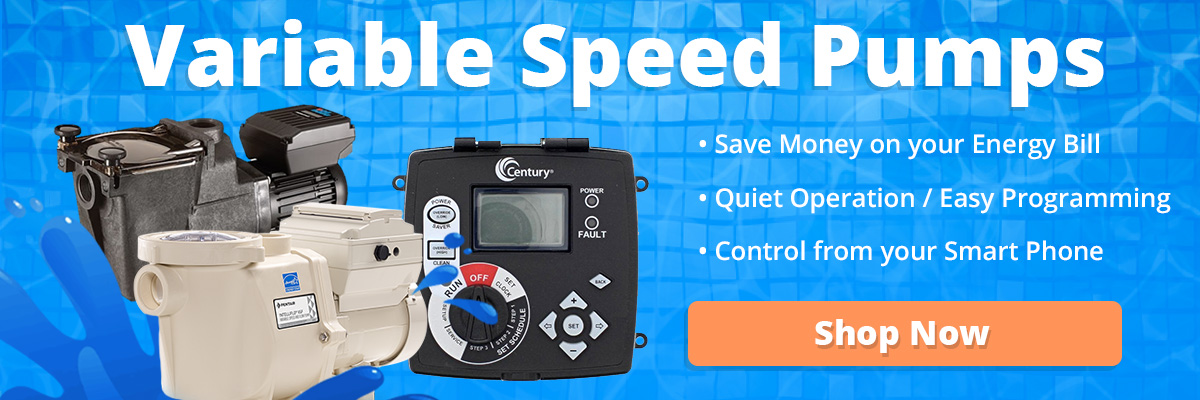
Peak Hours Vs. Off-peak Hours
Did you know that there are times of the day when electricity is cheaper? Throughout the day, the demand for electricity fluctuates. As a result, so does the price. The cost of generating electricity is highest during peak hours.
Depending on where you live and the power company, peaks hours may change. However, for the most part, peak hours usually fall between 9 am and 9 pm. In order to confirm the peak hours in your area, we recommend calling your power company.
Sometimes, local electric companies have a special program that offers special pricing. The program usually offers discounted rates during off-peak hours, like nights and weekends. However, in many cases, customers have to inquire about the program as they do not offer it as a standard alternative.
Running your pool equipment during off-peak hours can dramatically affect your overall bill. In a good way, too. This applies to your home appliances, as well.
Tip: If possible, operate your pump during your local designated off-peak hours. This is sound advice for a pump of any speed and regular household appliances. Off-peak hours will vary slightly.
When To Run A Pump On Low And High Speeds
In terms of the best setup for a variable speed pump, pool owners specifically want to know how long to run their pump at high and low speeds. Unfortunately, every pool is different, making it tricky to provide a template-style formula that fits every pool scenario. However, through trial and error, you can program your variable speed to operate at its highest efficiency for your pool.
Best Setup For Variable Speed Pumps
For the first few weeks of owning a variable speed pump, you might be playing with the settings until you find the correct balance between RPM’s and the length of time. First, we do not recommend running your variable speed pump at 3450 RPMs for 24 hours a day. It’s unnecessary and frankly, it defeats the entire purpose of a variable speed pump. The idea is to try and run your variable speed pump at the lowest RPMs as possible while still filtering your pool water properly. If you are running your pool pump to filter and turn your water over, we recommend using the middle and lower speed settings.
For example, for the first few days, you might run the pump at 2500 RPMs to see what your pool looks like. Next, you might dial it down to 1600 RPMs. If after a few days your pool starts to look cloudy or hazy, you can set the pump to run at 2000 RPMs. Every pool setup is different. This makes trial and error the easiest way to find your pump’s sweet spot.
On the other hand, pool owners use the high-speed settings when the pool needs more flow. This can include when you’re cleaning your pool, operating a salt chlorine generator, or using any water features like jets, in floor cleaners, or waterfalls. It’s important to pay attention to the minimum flow rates required for these items. In many instances, pool owners think their variable speed pump is not strong enough. However, in reality, they’re running their variable speed pump below the minimum RPMs.

Tip: Don’t be afraid to tinker with the RPM settings until you find your pool’s sweet spot. Also, familiarize yourself with your pool equipment and the minimum GPM each unit mandates for operation.
Example of Variable Speed Settings
Example 1:
Generally, I run my equipment at 1700 RPMs for 10 hours. I run this with the saltwater generator set at 50% for 10 hours. In my case, 1700 RPM’s is the minimum I can do to reliably activate the saltwater generator and filter the pool. Also, there’s a cleaning mode (on a feature) set to 2500 RPMs. Typically, I run that in conjunction with the filter mode for 2 hours a day to get the crud off the water and into the skimmer. I also have a high speed set to 3100 RPMs that I use when I add chemicals or after the family uses the pool. I only use it when necessary and turn it on manually when needed.
Example 2:
During the off-season, we aim to turn the water over once.
7 – 8 a.m. Low speed (to startup)
8 – 10 a.m. High speed (to sweep and skim)
10 a.m. – 12 p.m. Low speed (to filter)
5 – 8 p.m. Medium speed (to enjoy)
8 p.m – 7 a.m. Off
Example 3:
4 – 4:30 a.m. High speed (3450 RPMs to ensure the pump sufficiently primes- non-peak hours)
4:30 – 12 p.m. Mid speed (2200 RPMs- non-peak hours)
12 p.m. – 6 p.m. Low speed (1800 RPMS- peak hours)
The total run time is 14 hours. I run my pump this long because I live in Florida and it is consistently hot. In colder states, you probably wouldn’t have to run the pump as long.
General Guidelines
In most scenarios, pool owners establish specific time frames to operate their pump at high speed to correlate with any functions that require more flow. If possible, the time frames correlate to your areas off-peak times. Once you complete those tasks, you can lower the speed settings. Variable speeds take advantage of the pump affinity law. In short, it means that you can run your pump half as fast, twice as long and filter the same amount of water for a fraction of the price. If you cut your RPM’s in half, from 3450 to 1725, you actually get about 75% energy savings. (Spoiler Alert: I am not an engineer! The concept is much more complex.)
When it comes to the best set up for variable speed pool pumps, it depends on the pool and pool equipment. At the end of the day, if you’re consciously spending more money on a variable speed pump, you should reap the long-term benefits. With our general rules, guidelines, and tips, you will. Having a better idea of how to utilize the high and low speeds guarantees you more savings.
If you have questions about your variable speed pump, give us a call. We’re here to help you enjoy your pool and save you money at the same time.

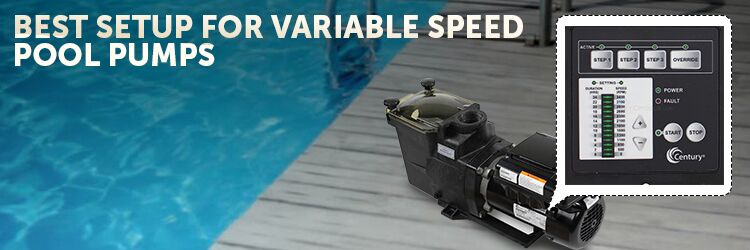

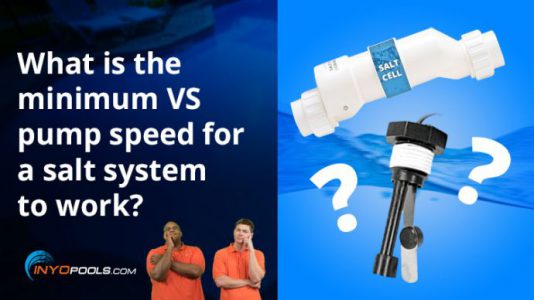
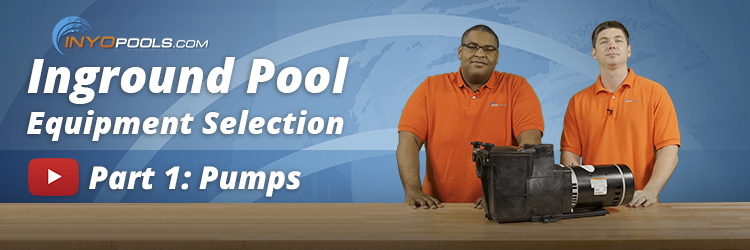
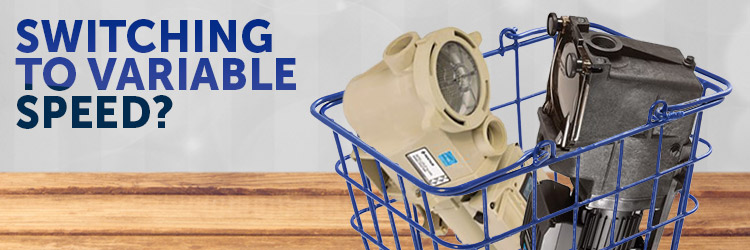
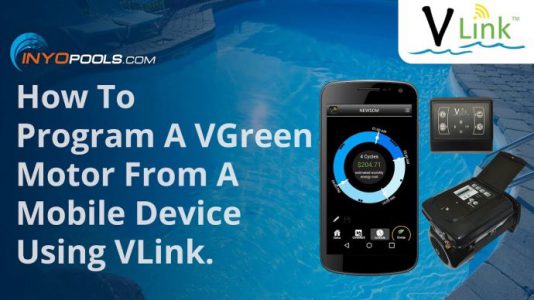






I have a 9000 gal pool and just installed a super flow variable pump when running on low speed (1400/2200/3000) 1400 my PSI is at 5 when on the other two speeds it run at 15-20 PSI is this pressure to low ?
It is normal for the pressure to be in that range at lower speeds. If the water is still flowing, and the pump is not losing prime, it sounds like it is working as it should
We just replaced our one speed pump to a variable pump in November of 2021. the technician that installed our pump set it to run at 3200 for 2 hours to clean debris and then 2000 for 6 hours. I have since set it to 2200 because we had air bubbles that wouldn’t stop when our solar kicked on. However I have noticed that since having the variable pump our water is not as clean and sparking. Even after refilling the pool and doing a stat up on the chemicals we can seem to keep it clean. We now have dirt settlement at the bottom and walls of the pool which we’ve never had before in the 20 years of having the pool. I wish I wouldn’t have bought a variable pump. In our experience, it’s not as efficient as our old pump or maybe we’re doing something wrong. The pool place that installed it is not being much help. Any advice would be greatly appreciated.
I don’t think that you are running it long enough? What is the pump schedule that was preset?
I agree, Tracy.
It would help to know the size of your pool in gallons and the model number of your variable speed pump. If you know any information about your original single-speed pump, that would also be helpful. Knowing the pool volume and the current VS pump information can help us figure out what RPM range you need to run. In addition, knowing the original single-speed pump information can help us determine if there is a reason for the significant drop in performance. For example,e your original single speed was two horsepower, but the new VS pump is only 1.5.
Get you a robot pool cleaner it will clean the bottom and the walls maybe a Pentair robot 920 it gets every last drop of fine dirt particles in your pool . This will help make your pool crystal clear and not put so much work on your pump
Get that guy back to reset the pump
He set your pump to a too slow a rate per hour
and for not a long enough time per speed
It’s NOT the pump
It’s the settings he made and should come back to correct that for you
Having installed 100’s of variable speed pumps I feel I can help you.
1. Run from 00.00 to 09.00 at the lowest setting (30% or 1400rpm)
2. From 09.00 to 18.00 @ 60-80% (1800 -2000 rpm)
3. From 18.00-21.00 40-60% (1600-1800rpm)
4. From 21.00-00.00 40% (1600rpm)
Yes 24hours. This will cost approx 5-6kw.
Its really important to remember in the old days we looked to circulate 3times the volume. But that is the hare and tortouse mentality, as long as the pump is NOT running chemicals are NOT circulating and stagnant water enables more rapid growth..
24/7 circulation= no stagnation and constant chemical circulation, and constant filtration.
In winter run the same but at lower flow rates consuming only 2kw.
Use these rates and adjust based on your pool.
Enjoy
I have a 13500 gallon pool. The TDS was through the roof so we dumped the water and are starting from scratch. They told us to dump a container of chlorine but now the chlorine is too high. Also, not sure it is a variable speed pool, in Florida, and not here all the time but have a company maintaining the pool.
What should we set the pool, 24 hrs?, and how many hours on high, medium and low. Also, we have foliage around us so that might contribute to problems, we want it to be as efficient as possible. Salt water pool.
In our area there is a company that will do reverse osmosis treatment of the water to get the TDS out of it. Only 15-20% water is lost depending on TDS… Worth a thought especially if water scarce or expensive near you
I’ve got a VSP and a booster pump for the cleaner. I know the filter needs to be running while the cleaner is on, but do I need to crank up the RPM on the filter if I have a booster pump for the cleaner? For reference, I run the VSP for typical filtering at 1950 as that is the minimum RPM to get water through the chlorinator. At the moment, I bump up the speed to 2450 when the cleaner is running. Is that necessary? Thank you for your time and input!
RPMs don’t guarantee a specific flow rate, as the pool’s plumbing plays a significant part in determining how much water the pump can pull at various speeds. But I would use the test and see method. First, run your cleaner at 2,000 RPMs, then see how the cleaner reacts. If the cleaner acts as expected, lower the RPM and test the cleaner again. You can continue this cycle until you find the minimum required RPM for your cleaner to run.
We have a 7500 gallon in ground pool. We just got our solar panels replaced because of new roof. We are having problems with major bubbles at the returns. Solar came out and said it might need to be set higher to push water up to solar. It’s a two story house. How long should we set it at a higher speed and how many rpms.
I can ask you a bunch of questions to make a semi-educated guess on the RPMs to use. Or, you can stand at the pump, throttling the RPMs up until it reaches a flowrate that adequately feeds your system. I suggest the latter because of the absence of guesswork. And, as for how long to set it for, that all depends on the current water temp, the desired water temp and the rise of heat from the heater. It is a solar heater, so its rate of heating varies significantly according to the weather. I suggest getting a solar control to turn your solar heater on and off when the heater requires action from the heater.
If your system is losing prime every time the pump turns off, it has to purge all the pipes, including the solar heater of air, every time it turns back on. The system may have an air leak that is causing this issue. Ways to find an air leak – How to Identify and Correct Air Leaks
I live in southern Florida. I have a fiberglass pool 12,500 gallons, no heater, no spa. What are your recommendations for a schedule to run the variable speed pump at. We have been experimenting, but haven’t come up with a satisfactory schedule.
In what way is it unsatisfactory? For example, is your water turning green, cloudy, or heavy debris?
My suggestion for you is what I would tell most people, start at a midrange RPM, run it for 8 hours a day for a few days, then check the chlorine levels. If your chlorine level is in the right range, you can either lower the length of the run or the RPM itself. Don’t do both at the same time as it will make it hard to pinpoint which is the bigger factor in keeping your pool clean.
Before you get to speed of the pump there are a few other things to consider. How old is your water? Pool chemistry is always additive and anything you add to your pool contributes to total dissolved solids which can impact the effectiveness of your disinfectant. Also if you love tablet chlorine your pool can quickly become overstablized which can impact the effectiveness of your chlorine. Try for a ph in the mid 7’s, alkalinity 150 and CYA 50 and TDS under 1000. In your area you may have to adjust for Calcium, keep it over 200. These are midpoints of a successful range and remember your pool is always heading in one direction of the other. Clean the filter and adjust the free chlorine to 2.0. A LITTLE Larrycopper based algaecide works great (check to see if it’s ok to use in your area) if you have heavy organic loading such as green leaves or grass clippings. just remember it works with your chlorine not instead of it. Try running your pump on lowest speed 4 hours a day and midspeed another 4. Midspeed works with most suction cleaners. Adjust up or down depending on how satisfied you are with the appearance. If you use a salt generator you will have to run more on mid speed.
3100 gallon spool. spa is 8’x6′, pool is roughly 13’x8′ with 6′ baja shelf. Installation company quoted with a 1.65HP variable speed pump (VS at my request). Is this overkill? if so, are there smaller VS pumps available?
I have a hayward vs950 pump on a roughly 13000 gallon pool, roughly 14×31 and depth 4-6ft freeform, paramount ozone w/ UV, no spa or heater in central Texas. Can you give me a good start point to set up schedule? Thank you.
I’ll give you similar advice I have given to most others, “test and see.” Start as a mid-range RPM like 2200, run it for a few days, test each day, maybe once in the morning and once in the evening. After the 3 days, do one last test, then check the general health of the pool. That could mean, is the water still shimmering, do you see any stains, debris, or other symptoms of an under-sanitized pool. If the pool water looks fine, you can either lower the RPMs or the run time. if the water chemistry nosedive with that RPM and run time, raise the RPM, but keep a similar run time, and repeat the testing.
You can start with an 8-hour run time, maybe split into 4-hour chunks for the afternoon and late evening.
I’d love some schedule/rpm advice: 40x30x17 “L” shaped with 9’ Deep end. About 28,000 gallons, 2” lines. 4 supply, 2 jets, 2 skimmers and a center drain. Aqua-rite Salt water chlorination, H300 gas heater and 300lb sand filter. Hayward Tri-Start VS 1.85HP pump. Live in NJ. Can someone provide a typical schedule? New to variable speed pump.
We have a 25,000 pool, L-shaped with a 9-foot section. We run our variable at 1800-2000 during prime day, 24000 overnight and 14000 in early am. We have a clear pool, but have trouble keeping any chlorine – average below a 0.5ppm. Not sure if it is flow related, but the water couldn’t be any clearer.
Matthew I didn’t get much info on pump speeds. Seems it is set under 2000 and no issues. My question relates to adding chemicals. Small 12,000 gallon pool. I was hoping to be able to set it somehow and when add chemicals move to a “cleaner” setting. From what I see is the only way to go in and turn the speed up manually then when done turn it down? Maybe 3000?
Name is Terry
I set my pump at 1725 RPM from 8pm till 4am and at 3250 RPM for the rest of the time.
At 1725 RPM the Heat pump stops working because of insufficient incomings water.
In the long run, does this schedule affects the heat pump , being turned on and off on a daily basis?
Thank you for your feedback.
Same problem help
I live in Washington state and have a 13000 gallon in ground pool. The previous pump just went out and I am looking to replace it. The inlet is 1 1/2″ from the pool and 1 1/2″ to the sand filter. Which pump would you recommend?
Does anyone have any advice? I’m all ears.
Sure do. All we need is what your pool scenario is, and for you to narrow down what type of advice you need and we’ll let it rip.
What I’m really needing to know is if the RPM’s are good for the size of pool and the length of time I’m running each function. My family and I usually use the pool between 12:00pm and 5:30 most days. We enjoy a “good, clean pool”.
Are these good speeds from your perspective?
Sure, I could say yes but that would be a complete guess. My answer to the similar comments about overall scheduling still applies to this slimmed-down time period. There are pools in every state, which have varying climates, plantlife/fauna that could affect the chlorine demand. No one is going to be able to tell you “this is right, this is wrong” for your pool based solely on some numbers.
In short: Run it, test it, adjust it (if necessary) – there is no way around it.
I’d love some schedule/rpm advice: 40x30x17 “L” shaped with 9’ Deep end. About 28,000 gallons, 2” lines. 4 supply, 2 jets, 2 skimmers and a center drain. Aqua-rite Salt water chlorination, H300 gas heater and 300lb sand filter. Hayward Tri-Start VS 1.85HP pump. Live in NJ. Can someone provide a typical schedule? New to variable speed pump.
I’d love some schedule/rpm advice: 40x30x17 “L” shaped with 9’ Deep end. About 28,000 gallons, 2” lines. 4 supply, 2 jets, 2 skimmers and a center drain. Aqua-rite Salt water chlorination, H300 gas heater and 300lb sand filter. Hayward Tri-Start VS 1.85HP pump. Live in NJ. Can someone provide a typical schedule? New to variable speed pump.
I kept my Pentaire pump and bolted a variable speed motor to it. $400 on Amazon. So if you have a 4-bolt pump now by any manufacturer you can buy a inexpensive variable pump in the $400 range and save big $$$
Hello all. I’m new to pool ownership so I Just need to know if my settings are “optimal” or whether I need to adjust them. Here’s what I have with regards to pool size, and equipment:
Pool = 8,000 gallons
Filter Pump = Pentair IntelliPro 4 160 (set for 7:30am-3:30pm @ 1,500 RPM)
Cleaner = Zodiac Baracuda MX8 (set for 6:00am-12:00pm A-N-D @ 6:00-8:00pm @ 2,200 RPM
Solar panel(s): Heliocol (set for 7:30am-3:30pm @ 1,500 RPM
Additional question: does my filter pump need to be running in order for my cleaner to be operating?
Unfortunately, we’re not going to able to tell you if that is good or not based solely on numbers. Two similarly sized pools in the same neighborhood could have different chlorine demands and foibles the homeowner needs to deal with. Just make sure you are testing your water regularly to ensure levels are correct. If you start to see dips in chlorine production, you either lengthen the run time during the day or raise the RPMs to allow for a higher turnover rate.
Matthew,
Thank you for the prompt responses. I appreciate this a lot.
Being that my pool is small in comparison to other pools, the deepest part of the pool is only 5ft. The previous owner did not seem to be a big swimmer, but she actually did us a favor. The pool was custom-built to our particular specifications as my wife doesn’t swim very well so there’s no way she’ll drown; however, she does enjoy using it frequently, but it has to be warm (no lower than 85 degrees).
Having said this, are the RPM’s (1.5K) on my solar function at an optimal speed?
Finally, getting back to one of my original questions, does the filter pump need to be operating (“on) when I’m running my Zodiac cleaner?
Fwiw – I live in southern CA and my Electric bill would be through the roof if I even ran the variable pump for 14 hours at a high rate rpm. The good thing is with my pool and having a variable pump, its not needed.
I have a 35,000 gallon pool and I set my pump to start at 3am and stops at 11am. I set the pump to run at 2350rpm for 4 hours and drops to 2000rpms for the remaining 4 hours.
I have Pine’s and other trees in my backyard and leaves and pine needles are a constant problem getting in the pool (mainly on the surface water). With my settings, making sure I have the right amount of chlorine tablets, and adding Perfect Weekly once a week and my pool looks like the Bahamas.
My pool is a decent size and it keeps clean even with running the pump at lower RPMs.
Thank you Matthew. Yeah, “trickle” was an intentional exaggeration, but I get your meaning. I might dial my pump speed down a bit. Thanks again for taking the time to answer.